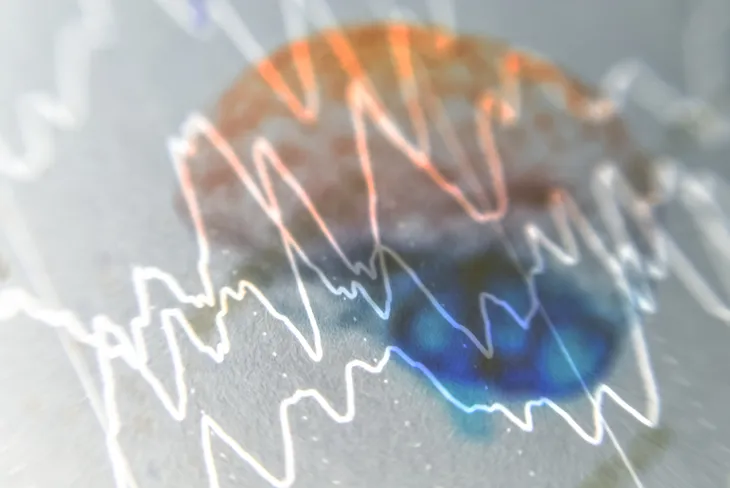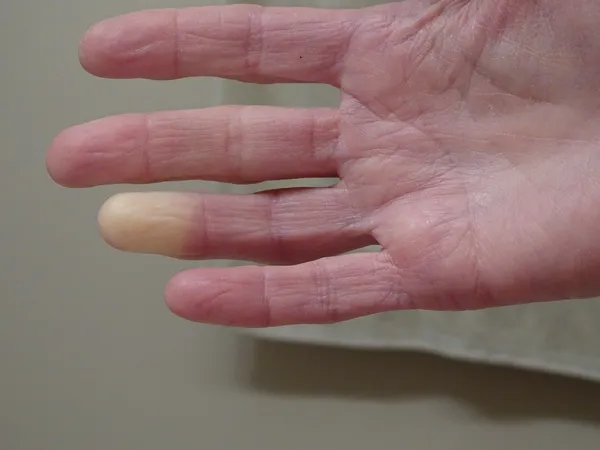Lupus is an autoimmune disease (when your body’s defense systems turn on you) and can cause chronic conditions lasting for years. Cases of lupus can range from relatively mild to life threatening, so recognizing and treating this condition early is very important.
According to Lupus.org, as many as 1.5 million Americans are living with Lupus, making it a widespread problem. Check out this list of 15 symptoms and risk factors to pay attention to that may require medical attention…
1. Fatigue is Common
This symptom of lupus makes it difficult to distinguish from other disorders including chronic fatigue syndrome and even Lyme disease (from a tick bite). According to Healthline.com, about 90-percent of lupus sufferers will experience fatigue.
The source notes that taking a nap can improve energy levels for those with lupus (while fatigue related to other diseases isn’t improved with rest). In cases of “debilitating” fatigue from lupus, a doctor may be able to administer treatment to put more spring in your step.
2. Hair Loss can Occur
Because of the inflammation caused by lupus, hair often becomes a casualty, notes the Mayo Clinic. The face and scalp are usually targets of skin inflammation related to the diseases, adds the source.
This means aside from losing hair from the top of your head, you can even experience eyebrow and beard loss. The hair loss can be subtle and gradual or can cause hair to fall out in clumps in some cases, explains the clinic.
3. Pain is a Marker
Lupus can come with painful, swollen joints that may confuse some medical professionals to consider arthritis as the cause. With lupus related joint pain, apparently the stiffness is worse in the morning. The pain itself starts off mild, then increases as the disease progresses.
Healthline notes that over-the-counter pain medications can help reduce pain and swelling, although doctors can likely offer a better treatment plan if that doesn’t help. However, as mentioned before, your doctor first has to ensure that it’s lupus you’re dealing with.
4. Lupus Can Cause Seizures
Like another disease, epilepsy, lupus can trigger seizures in the sufferer. In fact, information about lupus-induced seizures is posted on the Epilepsy Foundation website.
According to the foundation, up to 50-percent of lupus (systemic lupus erythematosus) sufferers experience a seizure as a result of the disease. Other neurological complications related to lupus can include strokes, dementia, psychosis and peripheral neuropathy (weakness or numbness in hands or feet), notes the source.
5. There’s Often a Telltale Rash
While many symptoms of lupus tend to be in common with other autoimmune diseases, there’s one that seems to stand out for lupus on its own. That’s a butterfly-shaped rash that appears across the face.
These are called acute cutaneous lupus lesions according to Lupus.org, and the rash appears when lupus is active. Rashes associated with the disease can appear elsewhere on the body, which can be made worse with sun exposure or even from sources of artificial light.
6. Raynaud’s Disease
The National Resource Center on Lupus by the Lupus Foundation of America claims that nearly one-third of people will also suffer from Raynaud’s Disease (or Raynaud’s Phenomenon). “Raynaud’s is a cardiovascular condition where the blood vessels contract, restricting the flow of blood in the hands, feet or both.” Oftentimes, the extremities that are affected by this phenomenon will turn red, blue, or purple. It affects people differently, where one person may feel numbness or a tingling feeling, and others may experience slight pain.
To avoid the triggering of Raynaud’s, it is advised that people with this condition avoid sudden temperature changes and wear mittens and warm socks/footwear in the colder months.
7. Depression
Mental illness and chronic diseases often go hand in hand. WebMD notes that, “60% of people with a chronic illness will experience clinical depression” at some point during their diagnosis. This is due to the emotional, physical, and financial strain of living with a chronic illness. Lupus is a condition that comes and goes, which can frustrate a lot of patients, because they never really feel like they are out of the woods and long for the life they used to have. The Lupus Foundation of America notes patients may have “feelings of helplessness, sadness, insomnia or sleeping too much, feelings of anxiety, lack of energy and feel a lack of interest in activities or things you normally enjoy” to name a few.
However, feelings of depression may not be brought on by the disease but potentially from medication used to treat lupus. It is important to note that regardless of what triggers depression, patients should consult their doctor about seeking psychotherapy or counselling.
8. Genetics Play a Role
Although it’s not a high percentage, Lupus.org explains you have about a five to 13-percent chance of developing the disease if you have relatives with it. The higher number seems to indicate a solid link to family health history.
However, the same source notes that if only the mother of a child has lupus, then the child only has a 5-percent chance of developing it. That being said, more than 90-percent of lupus sufferers are female.
9. Chemical Exposure May be a Trigger
According to WebMD, one of the risk factors of a “lupus attack” is exposure to chemicals, namely trichloroethylene found in well water and silica dust (an industrial material). A lupus attack shows the disease can go into remission but suddenly rear its ugly head.
A New York Times article from 2013 also notes other chemicals that may be linked to lupus include chlorinated pesticides. WebMD explains that at one time certain hair dyes and straighteners were suspected of being lupus risks but apparently research has shown otherwise.
10. Photosensitivity
While catching some rays does have its benefits, such as vitamin D, it can actually trigger a lupus flare. WebMD states that, “two-thirds of people with lupus are UV-light sensitive.” This can be a cause for concern considering halogen and fluorescent lights give off UV light.
Prolonged exposure to UV light will result in not only a butterfly-shaped rash as mentioned early but also cause a fever, joint pain, or other forms of inflammation.
11. Other Infections
Because lupus is an autoimmune disease, any form of infection not directly caused by lupus could bring on a lupus flare. Since the body is already fighting off an infection, it may persist to fight against itself, even once the infection is no longer present in the body.
For individuals with lupus, fighting an infection is a lot more difficult than for someone without lupus and fighting any type of infection puts a strain on and weakens the immune system, allowing for a flare to occur.
12. Age and Race
Unfortunately, there are some risk factors that are out of your control when it comes to developing lupus. The Mayo Clinic notes, “Although lupus affects people of all ages, it’s most often diagnosed between the ages of 15 and 45.”
The source also explains that race plays a role apparently if you’re of African-American, Asian-American, or Hispanic descent, your risk goes up even more. As we noted earlier, being female increases the risk dramatically.
13. Hormones Play a Role
Females are much more susceptible to lupus because of an estrogen link. While estrogen is present in men, it’s much more abundant in women. Women with lupus will have more severe symptoms before menstrual periods or during pregnancy, when estrogen production is high, explains Lupus.org.
However, there’s no evidence to suggest estrogen causes lupus directly, and studies of women taking estrogen in the form of birth control or postmenopausal therapy “have shown no increase in significant disease activity,” adds the source.
14. Joint Stiffness
The John Hopkins Lupus Center explains there can be co-occurring symptoms associated with lupus including stiffness of the joints, especially in the morning. This is sometimes confused with arthritis, so it’s important for a doctor to make the distinction, it adds.
The source says taking a warm shower may provide some relief for the stiffness, and your doctor may prescribe some medications to relieve inflammation including nonsteroidal anti-inflammatory drug (NSAIDS) or recommend over-the-counter pain medications.
15. Weight Changes
The same source also notes that weight gain or weight loss (without diet or lifestyle factors involved) can be the sign of a bigger problem, including lupus. In the case of weight loss, it may be from the lupus activity itself, and certain medications can cause a loss of appetite, it explains. In the latter case, the doctor may be able to find a more suitable medication without this side effect.
Other medications such as corticosteroids can cause weight gain, it adds. However, it’s important to achieve a healthy weight especially when you have lupus because women aged 35 to 44 with the disease are 50-times more likely to suffer a heart attack than the average, explains the Lupus Center. “Light to moderate exercise can also help you to maintain a healthy weight and cardiovascular system, while also boosting your mood,” it adds.


















